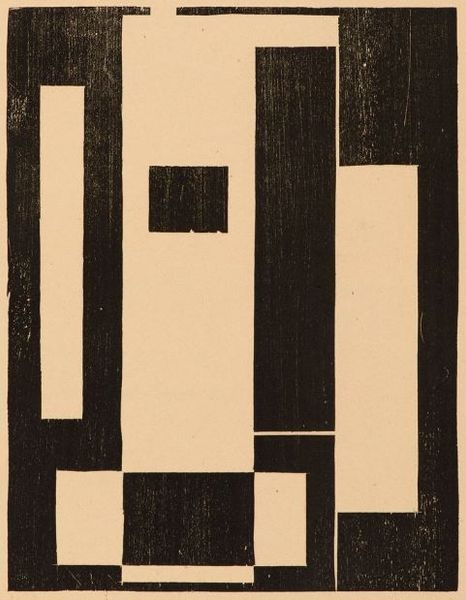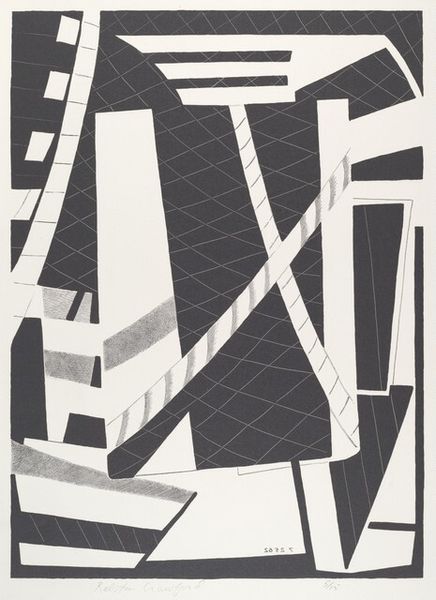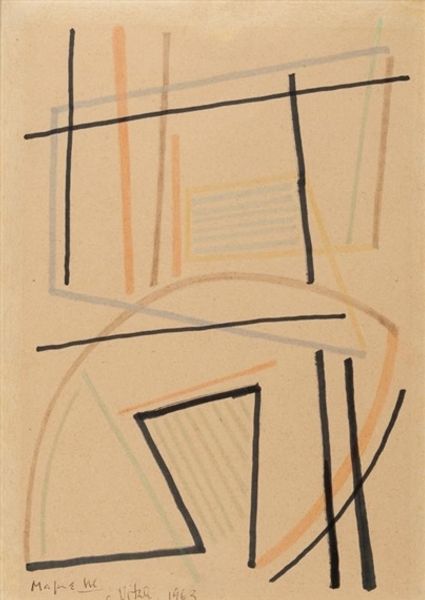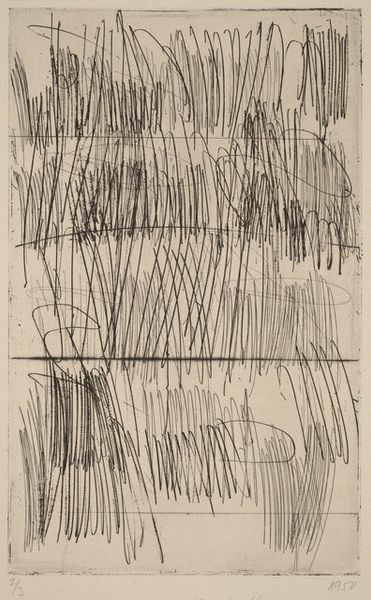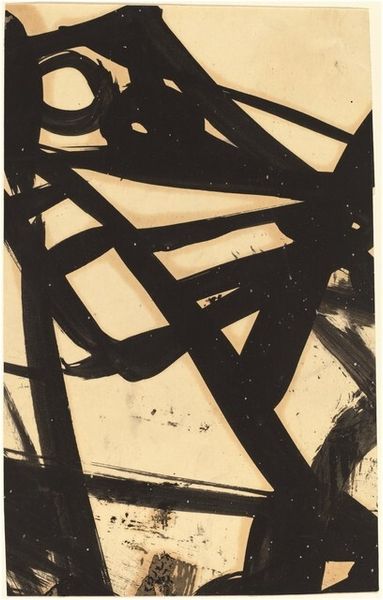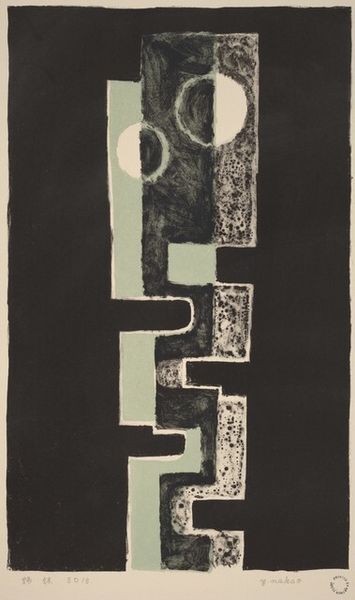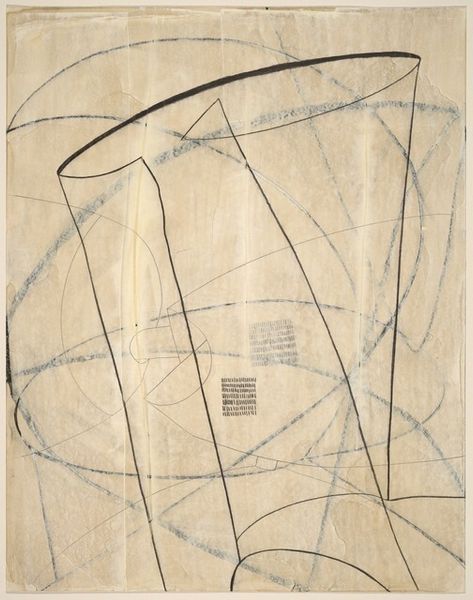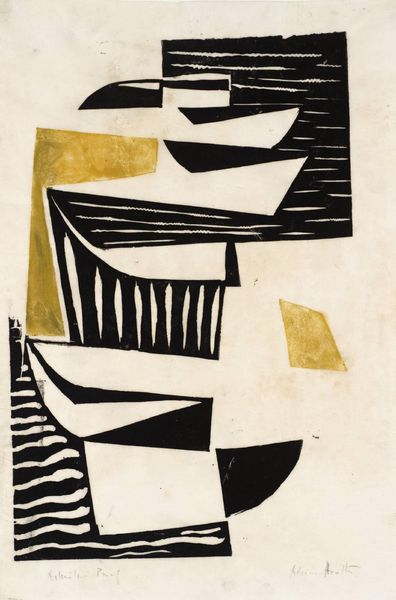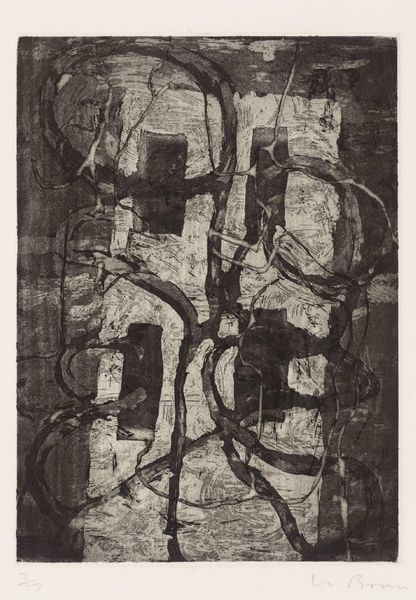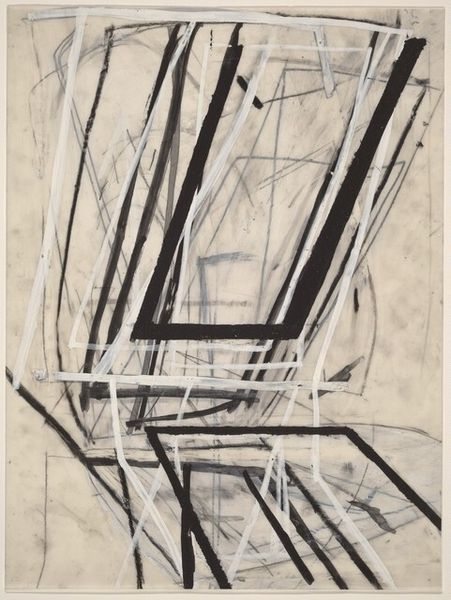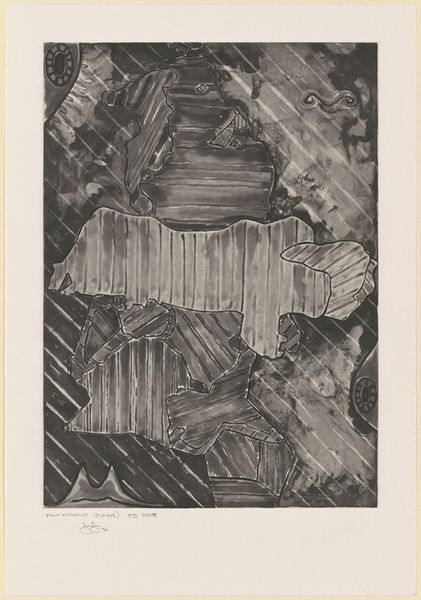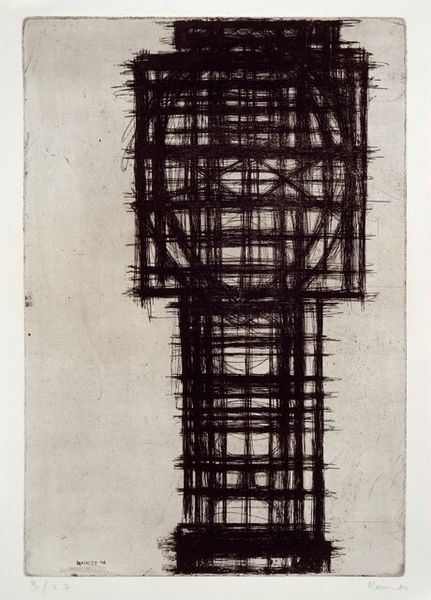
print, woodcut
# print
#
etching
#
linocut print
#
woodcut
#
geometric-abstraction
#
abstraction
#
line
Dimensions: image: 45.9 × 32.8 cm (18 1/16 × 12 15/16 in.) sheet: 51.7 × 40.2 cm (20 3/8 × 15 13/16 in.)
Copyright: National Gallery of Art: CC0 1.0
Editor: This is an untitled print by Zarina, made in 1968. It looks like a woodcut or linocut print with black and reddish-brown rectangles creating an abstract, almost architectural composition. What catches my eye is the texture in each block; you can really see the grain. What do you make of this piece? Curator: I see a fascinating engagement with the physicality of printmaking. Look at how the artist allows the inherent properties of the woodblock—its grain, its potential for splintering, its resistance—to dictate the image. It's not just about representation; it's about the labor and the tools used to create it. Editor: So you're saying the *process* is part of the meaning? Curator: Precisely. Think about the context of 1968. There was a questioning of established norms happening everywhere, including the art world. By embracing a 'lower' form like printmaking and emphasizing its inherent materiality, Zarina challenges traditional hierarchies. Are these rectangles building blocks, or are they barricades? What do you make of the limited color palette? Editor: The restricted palette really emphasizes the texture and the forms themselves. Maybe it draws attention away from symbolism and back to the physicality of the print, just as you said? It really makes you think about where these materials come from. Curator: Exactly! The choice isn't arbitrary. It’s connected to available materials and artistic decisions. It really gives a feeling of constraint or maybe control, as well as a tangible connection to the process of creation. Editor: This piece made me think differently about abstraction; it’s not just about the final image but about all the work, materials, and choices behind it. Curator: And that attention to the material conditions of artmaking gives the abstraction a kind of groundedness, I think.
Comments
No comments
Be the first to comment and join the conversation on the ultimate creative platform.
